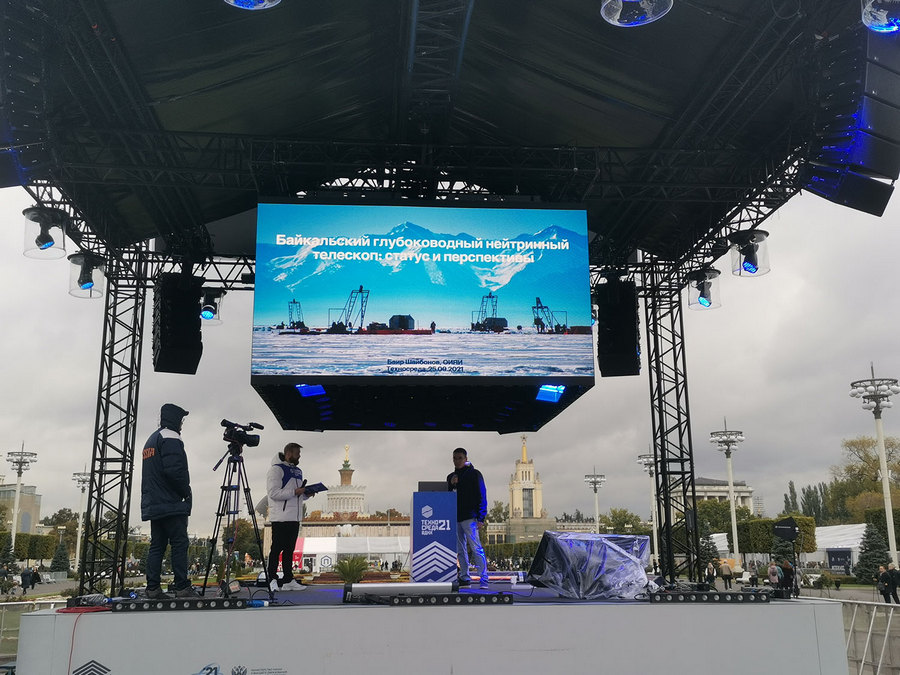What Neutrino Telescopes Are Needed for, What are Neutrinos and in Which Way Scientists Catch Them
The DLNP senior researcher Bair Shaybonov was involved in the main event of the Science and Technology Year in Russia, the festival “Tekhnosreda” (Techno-Environment) which was held at VDNKh in Moscow last weekend.
Bair talked about the Baikal-GVD Deep Underwater Neutrino Telescope, one of the top-priority projects in neutrino physics of the Dzhelepov Laboratory.

This unique facility in Lake Baikal is the largest in the Northern Hemisphere. It allows studying the evolution of distant galaxies, determining Earth’s composition and informing about the life of inhabitants of the deepest lake on the globe.
Event guests could take a look at a model of the Baikal-GVD Neutrino Telescope at the JINR festival stand in the area of institutions of higher education and scientific centres. Two days long, the DLNP researcher Rastislav Dvornicki answered the questions of stand visitors.
Among the stand guests, there was also Valery Nikolaevich Falkov, Minister of Science and Higher Education of the Russian Federation.
 Photo by Olga Radosteva
Photo by Olga Radosteva
 Photo by Olga Radosteva
Photo by Olga Radosteva
 Photo by Olga Radosteva
Photo by Olga Radosteva

